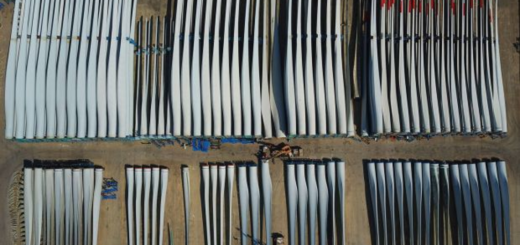Wind turbines and low frequency noise: Implications for human health
Author: Papadopoulos, George
Low frequency noise (LFN)
First of all, what is low frequency noise? It is noise, as the name suggests, at the lower frequencies of the audible range. It is general accepted to be within 20 to 200 hertz. Less than about 20 hertz is termed infrasound, because it is not usually audible to the human ear. ILFN (Infrasound–low frequency noise) is another abbreviation I shall use, as in some instances infrasound is comparable to LFN.
Noise that can be felt
Unlike higher frequency noise, ILFN is not just audible – it is also perceptible! [1] The human ear can hear infrasound down to a frequency of 12 hertz, after which it is perceived as single cycles of the sounds along with a sensation of pressure at the eardrums. [2] ILFN is also a useful tool in the military in the form of long range acoustic devices. [3] Various parts of the human body resonate to differing frequencies of ILFN. [4] Likewise any building structure can respond in a similar way causing annoyance and distress to the occupants. In the worst case scenario structures can collapse. [5]
As such it is not a benign phenomenon which is restricted to the aesthetics of noise – it can be very intrusive and distressing in other ways.
Noise that is selective in who it disturbs
I quote directly from the words of Dr Geoff Levanthall in a report prepared for DEFRA in 2003:
LFN causes EXTREME distress to a number of people who are sensitive to its effects… Such sensitivity may be a result of heightened sensory response within the whole or part of the auditory range or may be acquired. The noise levels are often low, occurring in the region of the hearing threshold, where there are considerable individual differences.
The World Health Organization is one of the bodies which recognizes the special place of low frequency noise as an environmental problem. [6]
Noise than can alter human mood
ILFN affects brain activity. According to a study done in Britain in 2003, people were exposed to an ILFN frequency of 17 hertz during a concert:
The presence of the tone resulted in a significant number (22%) of respondents reporting anxiety, uneasiness, extreme sorrow, nervous feelings of revulsion or fear, chills down the spine and feelings of pressure on the chest. [30,31] In presenting the evidence to British Association for the Advancement of Science, Professor Richard Wiseman said, “These results suggest that low frequency sound can cause people to have unusual experiences even though they cannot consciously detect infrasound. [6]
The story doesn’t end here. There are other research papers that link wind turbine infrasound with perceptions of ghosts [7] and anxiety. [8]
Noise that travels through walls and terrain
Again from Levanthall: “Infrasound is difficult to stop or absorb. Attenuation by an enclosure requires extremely heavy walls, whilst absorption requires a thickness of absorbing material up to about a quarter wavelength thick …” [9] Consider that the wavelength of 1hertz is 340m, 10 hertz is 34m, and 25 hertz 13.6m, there is therefore no reasonable way of affording protection to people against even 25 hertz: one will need walls that are over 6 meters thick!
Noise that travels very long distances
Whilst it would be expected that the ILFN would rapidly dissipate like other forms of noise over distance, one must be careful to put this into context. According to Levanthall:
The attenuation of sound in air… is very low at low frequencies. Other attenuating factors, such as absorption by the ground and shielding by barriers, are also low at low frequencies. The net result is that the very low frequencies of infrasound are not attenuated during propagation as much as higher frequencies. [10]
Under conditions of 20 degrees Celcius at 70% humidity, Levanthall states that noise at 63Hz will dissipate at only 0.1dB/km – i.e. negligible losses.
However, there is another factor to consider: noise dilution over distance. The loss according to Levanthall is about 6dB for each doubling of distance. However, what happens when dealing with 140 wind turbines in the region each producing ILFN? How does this noise energy “dilute” out over distance? It clearly doesn’t follow a simple model of dissipation and instead interacts with the ILFN from other wind turbines (and other industrial sources such as open-cycle gas plants, one of which is due to be built just outside the village at Dalton).










